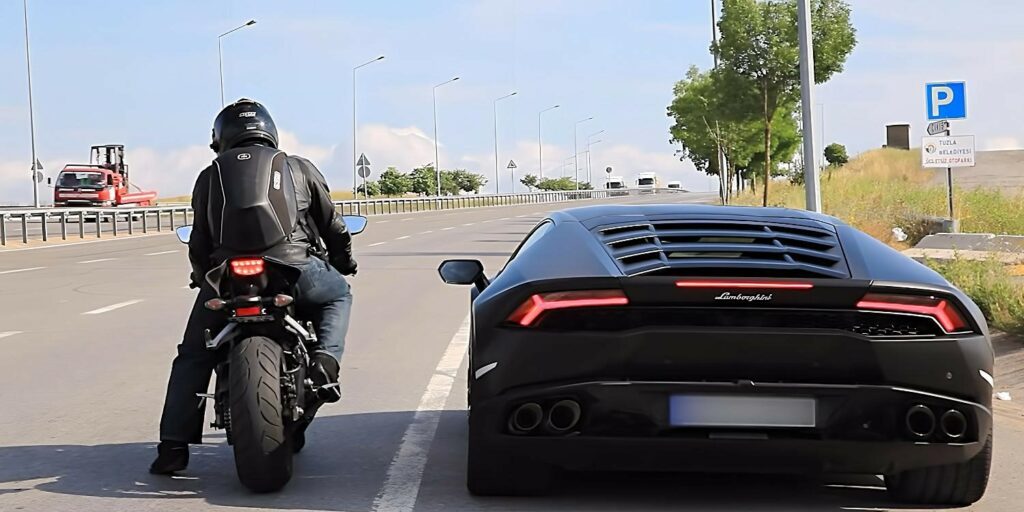It’s amazing the number of drivers who think their cars can pull off faster than a motorcycle from idle at a stop light. The truth is any decent bike is quicker off the line than your average car. Don’t get me wrong, cars rule the freeway realm. But our torque monsters, say, the little Kawasaki Ninja 300, can churn out short bursts of supercharged power for mind boggling acceleration. As long as the next light is less than 10 seconds away, you are getting thrashed by the baby Ninja. And no, not you Teslaholics, I am addressing the petrolheads here. Now, let me give you an itty-bitty education on — Why are motorcycle engines so powerful?
Motorcycles are powerful because they have a much higher power-to-weight ratio than cars, which makes them capable of more rapid acceleration from a standstill. Their engines are tuned for more power compared to torque, typically have higher compression ratios and multi-cylinder ones feature a shorter stroke. However, cars have higher torque, better aerodynamics, and (all things considered) a wider useful power band, helping them dominate higher speeds at considerably lower rpms, albeit taking their time to get there.
For their size, motorcycle engines are a feat of engineering with 2-cylinder plants pouring out anywhere from 55 to 80 hp while the 4-cylinder ones can manage up to upwards of 130 hp. Impressive! But all that power has to come from somewhere, right? So, where their car counterparts stride, motorcycle engines sprint. They come alive at redlines north of 10,000 rpm whereas a typical car mill hardly ever goes past the 7,000 rpm mark. Only by running way faster can a smaller engine can simulate more ponies.
The caveat, bikes ramp up much less torque than cars. And what is the difference between horsepower and torque, you wonder? Take out your notebook, let’s take from basics!
Understanding Engine Power: The Basics of Displacement, Speed, Horsepower, and Torque in Motorcycles

It isn’t unusual to hear nerds haggle over an engine’s performance as torque at some rpm, horsepower, and the cc. I will try to be brief but robust with the basics only, just so they don’t own you in the comments!
The displacement (cc) of an engine is the total volume swept by its pistons (from TDC to BDC), which is conventionally measured in liters corresponding to centimeters cubic. It means a 1,000 cc (centimeters cubic not Chinese centimeters, lol) is chugging 1 liter of the fuel and air mixture with every gulp of breath. To work out the cc rating of an engine, you need the diameter or the cylinder and the stroke length (height of swept part of cylinder from TDC to BDC) then proceed as follows.
V(cc)= (πd2h)N/4 or V= πr2hN
Where;
-
- r = d/2 (cm)
- h = Stroke (cm)
- N = Number of cylinders
Horsepower (hp) is the rate at which an engine works. A bike engine can have a high horsepower but moderate torque meaning it will accelerate a lighter chassis quicker but will not match the hauling capability of car engines as more torque is required to do so. Have you seen some of the YouTube channels where they make inline 4 (straight-four engine) hot rods? I have mad respect for the content creators and a soft spot for the sound “ricers” make with their high and happy revving, but it’s all a sham, or as they say, for entertainment purposes only. The engines die sooner because they’re underpowered to push heavy metal off the line. Horsepower can wear several hats, and so, we have this relation:
1 hp = 746 Watts = 2,545 BTUs = 1,055 joules
The displacement (cc ) and horsepower (hp) correlate in an intricate way as they depend on the rev limit, number of valves per cylinder and timing, compression ratio, air induction, oversquare or undersquare, air-to-fuel ratio, efficiency etc… As an over-simplification, use the following quick method to estimate the hp given the cc of a small to average 4 cycle ICE.
-
- Divide the engine capacity by 14
- Divide the engine capacity by 17
- The two values obtained above give the range of the engine’s hp rating
Torque is the turning effect of a force acting at a distance from the center of rotation whereas power is the rate of doing work. Contrary to common misconception, dynos can’t measure horsepower directly as it’s derived from torque. Instead, they measure the torque at the wheel and corresponding engine rpm and then work out the horsepower as follows.
Horsepower = Torque * RPM / 5,252
The number 5,252 is the ratio Scottish engineer James Watt arrived at after pursuing numerous experiments with actual ponies to decide just how much one horse could do per unit of time. But if you are like ninety something percent of all humans who like to use metric units, then its equivalent is 9,549.
Power (kw)= Nm * RPM / 9,549
Manufacturers may also give braking horsepower (bhp), which refers to the useful power output of a bike engine measured at the flywheel (it excludes losses in the drivetrain). Don’t confuse this with wheel horsepower (whp), which is the useful power that is received at the wheels — generally 15% less than bhp due to frictional losses in the drive train. By definition, this is the value of horsepower first obtained by a dyno, so we can work backwards to estimate the flywheel hp given the rpm and the driveline losses.
While manufacturers typically give a single horsepower and torque value at some arbitrary rpm, this is only a tip of the iceberg in the most literal sense of the word. They represent a snapshot of the engine’s performance at its peak, which could be a very narrow instant.
My Top Recommended Tools & Supplies — CLICK HERE! I highly recommend these motorcycle tools for their affordable yet top-notch quality, reflecting my extensive 50+ years of motorcycling experience and expertise as a rider, leader, and consultant in 25+ countries. So, whether you're a seasoned rider seeking an upgrade or a new enthusiast starting your journey on two wheels, I'm confident that these gear recommendations will serve you exceptionally well. |
Case Study: The BMW R 1100 GS Dynamometer Results
I recently had the chance to put the BMW R 1100 GS to the test on a dynamometer, and I must say, the results were pretty impressive. As you may know, the R 1100 GS is a well-loved adventure touring motorcycle known for its versatility and dependability on the road. In this case study, I’ll be sharing my findings from the dynamometer test and giving you a closer look at the performance characteristics of this bike.
The BMW R 1100 GS Torque vs. Horsepower Characteristics Over 3,000 to 7,500 RPM Range
| Engine Speed (rpm) | Horsepower (hp) | Torque (lb.-ft.) |
| 2,000 | 16 | 10 |
| 3,000 | 38 | 60 |
| 4,000 | 60 | 80 |
| 5,000 | 80 | 82 |
| 6000 | 100 | 84 |
| 7,000 | 123 | 92 |
| 8,000 | 147 | 96 |
| 9,000 | 160 | 95 |
| 1,000 | 166 | 84 |
Ideally, a torque curve would be a horizontal line so that an empirical engine could produce the same peak acceleration at all rpms. Now observe how the horsepower values rise almost linearly with rpm and then level out reaching a peak value of 74 hp near 5,500.
The factory spec for the R 1100 GS is 90 hp at 6,750 rpm, and a peak torque of 95.13 Nm at 5,250 rpm, so only the torque values seem to match! Now, our test subject must have been one tired sweetheart, or BMW Motorrad has their way with giving flashy figures. But wait, our Dynojet 250i captures wheel horsepower rather than braking horsepower measured at the flywheel. If you take 15% losses off the top (15% of 90 = 13.5), you get a peak whp of 76.5 hp where the rubber meets the asphalt. Ours was just two-and-half ponies short. Now it all makes sense, right?
Power Comparison: Are Motorcycle Engines Pound-for-Pound Stronger Than Car Engines?
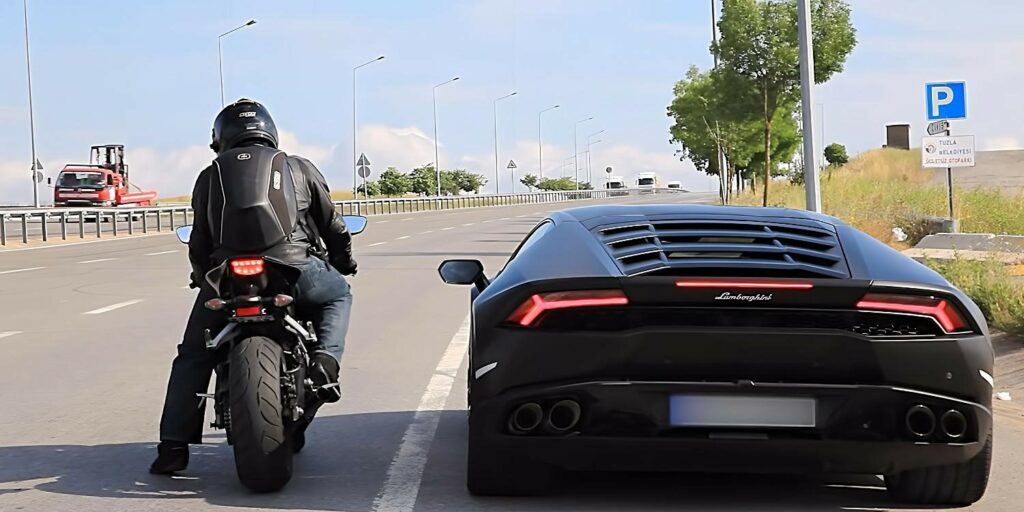
Probably not! To answer this correctly, we would need to specify which motorcycles engines versus which car engines we are talking about. Not all motorcycle engines are quite powerful, as the majority of designs produce less or equal amount of horsepower per liter as the conventional car engines. If we are averaging all car and motorcycle engines out there, then bikes are no match for cars.
Here is a sample of the most popular motorcycles and cars in the U.S. market and some numbers to back up this claim:
Performance Between Popular Motorcycles and Cars in the U.S. Market
Category Motorcycles Cars
Touring Harley-Davidson Street Glide (1,868 cc, 100 hp, 5.5 s) Chevrolet Silverado 1500 (2,700 cc, 310 hp, 5.4 s)
Sport Cruiser Harley-Davidson Sportster S (1,252 cc, 121 hp, 4.6 s) Ford F-150 (3,300 cc, 290 hp, 6.6 s)
Premium Cruiser Honda Goldwing (1,833 cc, 90 hp, 3.9 s) Ram 1500 (3,000 cc, 260 hp, 4.5 s)
Adventure BMW R 1250 GS (1,252 cc, 136 hp, 3.5 s) Jeep Wrangler Rubicon 392 (6,400 cc, 470 hp, 5.9 s)
Supersport Honda CBR1000RR-R Fireblade (999 cc, 215 hp, 3.3 s) Honda Civic 2022 Si (2,000 cc, 200 hp, 6.8 s)
Cruiser Honda Rebel 1100 (1,100 cc, 86 hp, 3.7 s)s) Honda CR-V Non-Hybrid (1,500 cc, 190 hp, 9.3
Off-Road Kawasaki KX 85 (84 cc, 28.5 hp, 12 s) Toyota Camry (2,500 cc, 301 hp, 5.1 s)
Dual-Sport Yamaha Tenere 700 (689 cc, 72 hp, 4.53 s) Toyota RAV4 (2,500 cc, 203 hp, 8.55 s)
Sport Kawasaki Ninja ZX-6R (636 cc, 134 hp, 3.2 s) Toyota Highlander (2,400 cc, 265 hp, 8.0 s)
Trike Can-Am Ryker (900 cc, 82 hp, 5.0 s) GMC Sierra 1500 (2,700 cc, 305 hp, 5.5 s)
Hyperbike Kawasaki Ninja H2R (998 cc, 326 hp, 2.91 s) Subaru Outback (2,500 cc, 182 hp, 8.65 s)
Standard/ Performance Indian FTR 1200 (1,203 cc, 120 hp, 3.3 s) Chevrolet Malibu (1,500 cc, 160 hp, 7.8 s)
Sport Touring Ducati Multistrada V4 Pikes Peak (1,158 cc, 170 hp, 3.2 s) Hyundai Sonata (1,600 cc, 180 hp, 7.85 s)
Note: cc stands for cubic centimeters, and hp stands for horsepower. 0-60 mph refers to the time it takes for a vehicle to accelerate from 0 to 60 miles per hour.
The most popular vehicles are a random sample from the top 15 America’s most loved, and so most of them are daily drivers. I chose the base models of lower trim levels not only because they were cheaper but also because they’re a staple at every dealership.
In most categories, motorcycles have a lower engine displacement but a higher horsepower and faster acceleration compared to cars. For example, the BMW R 1250 GS Adventure motorcycle has a 1,252 cc engine displacement, 136 horsepower, and can go from 0 to 60 mph in 3.5 seconds, while the Jeep Wrangler Rubicon 392 car has a 6,400 cc engine displacement, 470 horsepower, and a 0-60 mph time of 5.9 seconds. However, there are some categories where cars have a higher horsepower and faster acceleration than motorcycles, such as the Off-Road category, where the Toyota Camry has 301 horsepower and a 0-60 mph time of 5.1 seconds compared to the Kawasaki KX 85 motorcycle with only 28.5 horsepower and a 0-60 mph time of 12 seconds.
But Powerful Is a Relative Term – All Motorcycle Engines are Not Built Equal
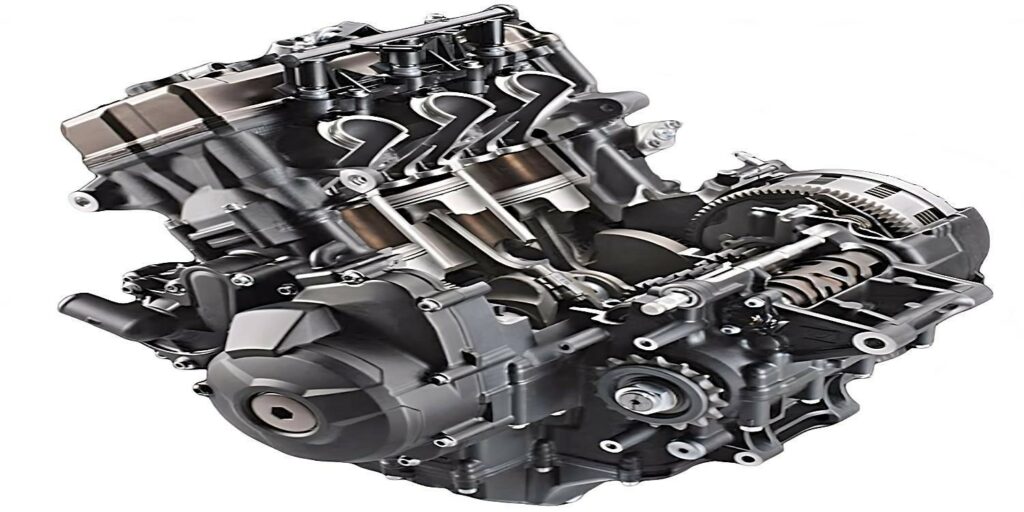
So, what classes of motorcycle engines exist?
-
- Lightweight (50-400 cc)
- Middleweight (600-999 cc)
- Heavyweight (1,000-2,000 cc)
Small cc bikes are much less powerful compared to cars. Manufacturers intentionally throw in less ponies in these to fit under the entry level A1 driving class tier. However, the little torque devils typically churn out up to 40 ponies, which is great for their small displacement (have great cc/hp ratios).
It is the middle to heavy weight bike engines that are roughly comparable to their four-wheeling counterparts in cars. These typically roll out a decent 60 to 240 ponies depending on the exact model. But there is a catch, motorcycle engines are not going anywhere near their maximum rated power while lagging under 10,000 rpm.
The staple of engines in the performance bike category are inline four engines which are a work of art for balanced spinning and decent power thanks to their high compression. They have a “square construction” with wide bore and short stroke — the piston is wider but moves a shorter distance inside the cylinder.
On the opposite side of the spectrum, you have cruisers, like the Honda Goldwing, and touring and adventure bikes, like the R 1250 GS, which, although having engines of the same or larger size, churn out only 90 and 134 hp respectively. In fact, most of these specialized long distance motorcycles have v-twins, parallel twins, and boxer engines that are hardly ever 150 hp and above. On the plus side, they’re designed to run at a lower rpm and last forever.
Design Elements That Give Motorcycle Engines a Leg Over Their Car Counterparts
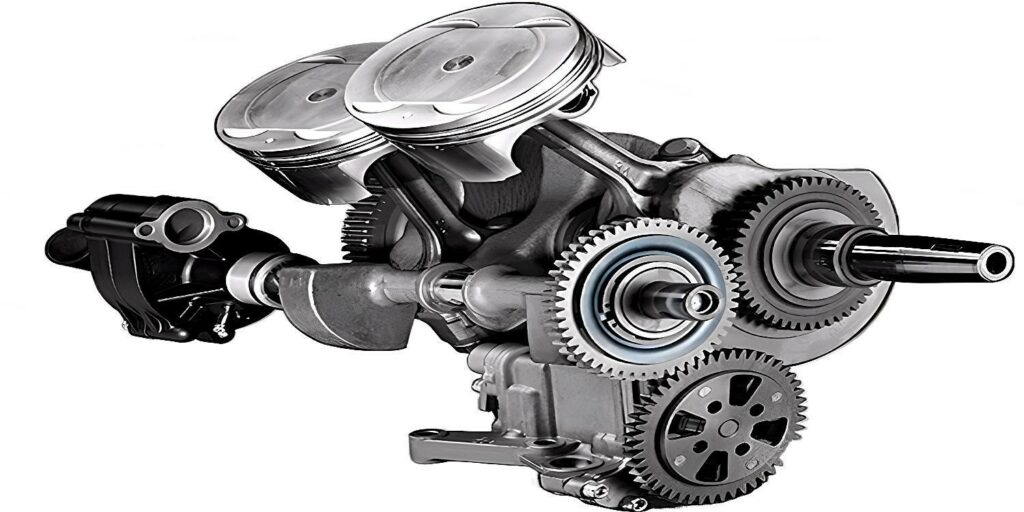
All ICEs work pretty much the same way – cram some air-fuel mixture in a tight space and introduce heat, and bam! Now let’s see what makes a bike’s engine especially powerful.
Shorter Stroke – Suck-Squeeze-Bang-And-Blow!
The stroke is when the piston moves from the highest to the lowest position in the cylinder (combustion chamber). Shorter strokes mean an engine’s piston travels a shorter distance until the next power stroke (bang). This usually means the engine can do higher rpm and hence instant power. However, there are limitations to the con rod and piston materials that can withstand such rapid deceleration and change of direction up to 20,000 times a minute.
Gas Engines Are Built Lighter Than Diesel Ones
While high compression is an important variable in the formula for the final output power of an engine, it also means that thicker heavier materials will be needed to keep the explosions inside. All motorcycles, except for a handful of diesel ones, use spark plugs for igniting the charge and are thin-walled. In contrast, higher power density of diesel requires denser piston, con rods, crank shafts etc.
So, again we cycle back to the power-to-weight ratio, which is much better for bikes compared to cars. That bikes engines have less weight to haul both inside and outside of themselves means they can give their four-wheeling counterparts a run for their gas.
Bikes Have Rugged But Reliable Cooling Systems
Bike engines are more exposed making air cooling and even liquid cooling systems more efficient. Although running hot makes some engines perform optimally, there is an added advantage to keeping things cooler inside the chamber. Another noteworthy law in chemistry class is Charles Law, which dictates that for a constant pressure (for the same compression), the volume of a gas is directly proportional to its absolute temperature. Put simply, you are able to cram in more of the air and fuel mixture (and make more power) at cooler operating temperatures for the same engine compression.
Don’t Forget The Drive Train…
Taller gearing of motorcycles results in more rapid acceleration but comes at the expense of top speed. This can be achieved by having a smaller front and/or larger rear sprocket installed. It’s easy to see why motorcycle engines get all the credit for zooming out on Subarus but, in truth, taller gearing has a lot to do with the vehicle’s performance than meets the eye. Under the crankcase, most bikes come with a manual 5 or 6-speed sequential gearbox which is far more efficient than the intricate mammoths installed in car drive trains.
The Most Exceptional G.O.A.T Motorcycle Engines of Today and Yesterday Worthy a Mention
I have been riding here and there, roaming around the earth, during which time I have had the pleasure of owning, operating, and maintaining more than 20 motorcycles from the Italian Malagut and a Spanish Derbi in France to the Kawasaki Z250SL in Thailand and KLX 250 in Vietnam. I have learned — from the joyful hours of skinning knuckles — that a mechanic’s job is fulfilling and that engines are what essentially defines a motorcycle. It is no wonder manufacturers often name their models after the engine.
While we are on the topic of motorcycle engines, there are a bunch of power plants that I think are worthy of a mention. And where better to begin that with the King of American roads?
Harley-Davidson’s Engine Innovations: From the Evolution to the Revolution Max
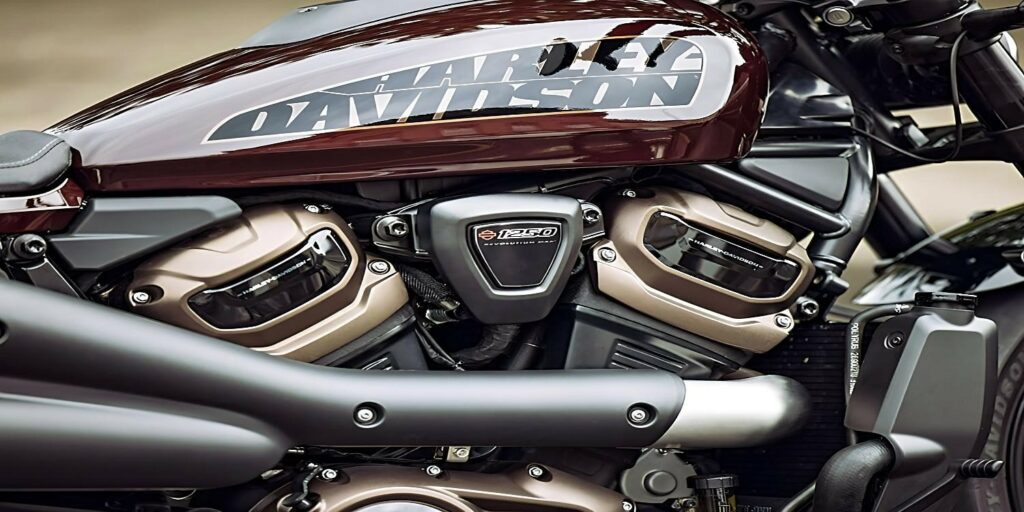
Over 40 years ago now, Harley was — save for the solid upper management — a buyout company in need of rescuing. Their salvation hinged not only on the managers putting back every last cent they had in the company’s coffers but also in finding a way to stop spending a big share of their revenue on warranties for their unreliable and outdated 1966 Shovelhead motor. Thus, came the Harley-Davidson Evolution 1,340 cc OHC 45° V-twin, a single innovation that put Harley on an upward trajectory for the next three decades plus.
Jump to 2021, and Harley has a shiny new 1,250 cc 60-degree liquid-cooled V-twin baby, a departure from their design language. They’re calling it Revolution Max, the first of which live in the all new 2021 Pan American adventure motorcycle— also a first for Harley. And oh, how wonderful it would be to have this engine in various denominations! I’m particularly enthusiastic about the possibility of a 975 cc version.
Now, having paid tribute to the King, the other two slots in the top 3 go to Japanese manufacturers. Honda, Yamaha, and Kawasaki have not only birthed more engines than anyone else but also some of the most reliable engines the world has ever seen.
Honda’s Innovative 750cc Engines: From the NC750X to the Revolutionary CB750
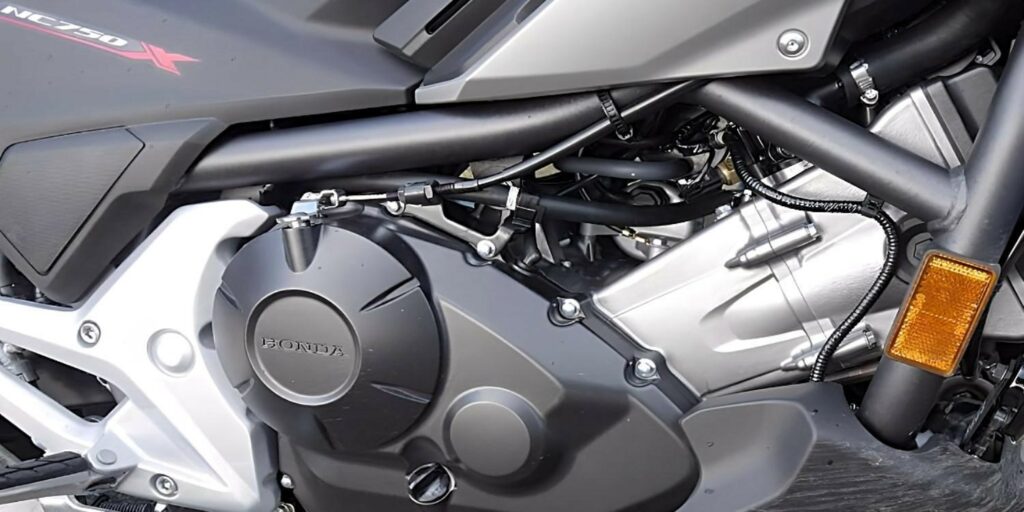
Back in 2011, engineers at Honda must have burned the midnight oil to come up with such a devious plan as the Honda NC750X. A fun and easy to ride engine on a sturdy motorcycle — an engine that defines a motorcycle for city commute and for the open road. The little compact adventurer has incredible low-end torque and will not lag on the highway, edging out the competition where two bikes were required, one to enjoy fun weekend adventures and one for running errands. Copy, paste, and you have the Honda NC700S, NC700X, NC750D, and NC700D Integra all of which share the same versatility and reliability DNA.
Reminds me, this isn’t the only 750 cc that Honda shocked the world with — recall the 1969 CB750, a 736cc, SOHC, parallel-four engine that we were just not ready for yet? Yes, the Honda CB750 was revolutionary in that it was the world’s first mass-produced four-cylinder engine. And for me, it will not come as a surprise if Honda pulls another middle-weight-er out of their proverbial magic hat, and we give them another standing ovation.
Yamaha Genesis Engine Line: From FZ750 to the YZF-R1
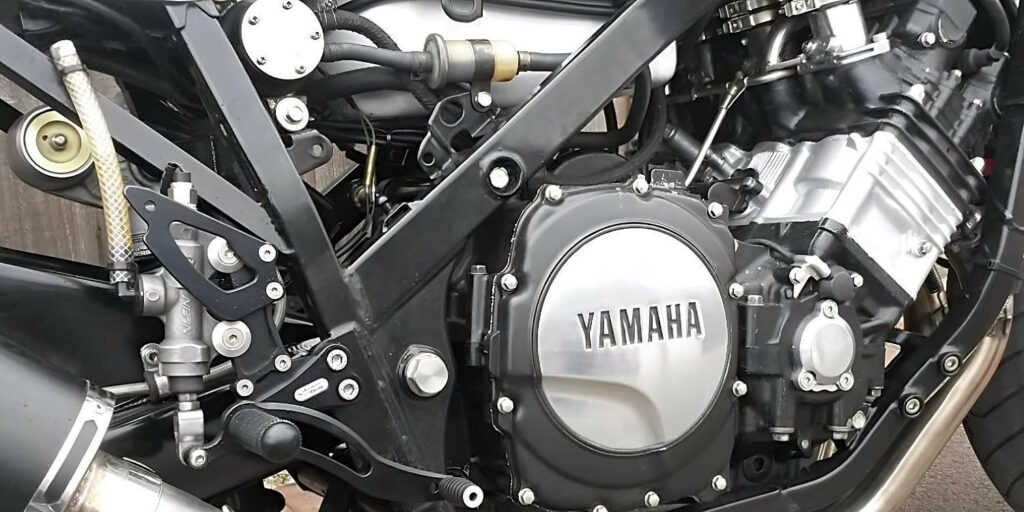
Let’s now talk about the Yamaha Genesis line of engines for a sec. Firstly, they’re an assortment of engines, not just one, ranging from 700 to 1,000 cc with a distinct build of three intake valves and two exhaust valves. This power plant made its debut in 1984 as the FZ750 and later the FZX700 and FZ750, culminating in its 2009 YZF-R1 appearance. Where it featured a crossplane crankshaft and big-bang firing order to deliver similar power numbers as the generally more expensive V4 motors. It’s possible the big blue was playing catch to Honda after the success of the CB750.
Honorable Mentions: Ducati 851, Ducati V4, Triumph Triple, and Kawasaki H1
I think it’s worth giving honorable mentions to the legendary Ducati 851, Triumph Triple, and Ducati V4 as well as the fourth giant among Japanese makers, Kawasaki.
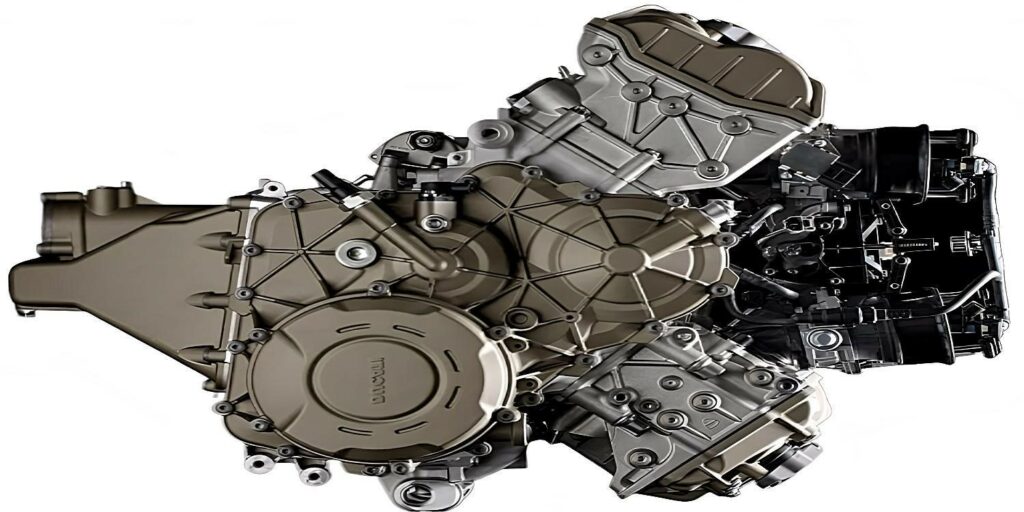
We have allotted top spots for the Japs, but there are other powerhouses like the Italian Ferrari of motorcycles, the Ducati. Their 1988 Ducati 851 V-twin (V2) water-cooled engine, built to replace the conventional air-cooled SOHC V-twin, just kicked differently. And it’s not because of racing pedigree or even impeccable Italian craftsmanship, but rather embracing new technology and the spirit of continuous improvement, just like the Japanese Kaizen. It was Ducati’s first stab at modern fully faired, liquid-cooled, 4 valve heads motorcycles, and it was a hit.
Enter the game changing Ducati V4, a 4-cylinder MotoGP-derived motor that delivers high torque and horsepower values for performance-oriented motorcycles. And as manufacturers increasingly adopt the V4 engine configuration, I have been keeping a close watch on the Ducati V4. For the Panigale, the 2023 Desmosedici Stradale has received a series of updates key among them the smaller size and unconventional counter rotation. Ducati decided to mount the motor “backwards” so that it spins in the opposite direction to the wheels to cancel out the gyroscopic effect.
Other iterations of the Ducati V4 include the smooth sailing Granturismo adapted for “Adven-touring,” taking the edge off the otherwise demonically frenzied motor.
Triumph is famous for reliability, and this list would not be complete without mentioning their Triumph Triple series of engines that they have produced since the 1990s, featuring in Thunderbird, Adventurer, Legend, Tiger, Speed Triple, and Daytona models over the years.
Towards the end of the 90s, Triumph shifted to fuel injection solving the carburetor problems, and over the years, the displacement has expanded from 660 up to 1,050 cc. I have had the privilege to ride both Tiger and Daytona for long hauls, and I can attest to their smooth power delivery, which compliments their responsive handling characteristics of, say, the 1986 Suzuki GSX-R1100, the 1992 Honda CBR900RR Fireblade, and even the latest Yamaha R1 Inline four engine.
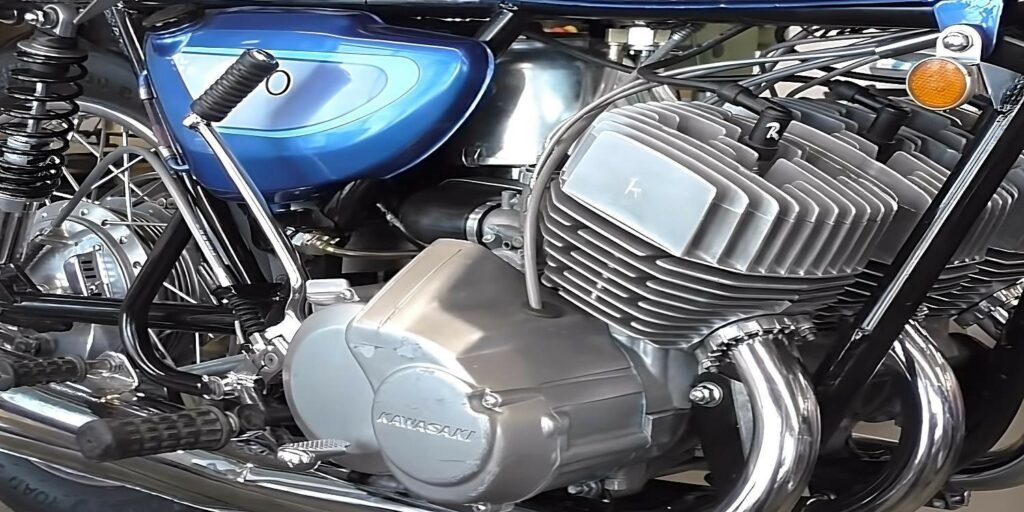
And before we call it, have you ever heard of the Kawasaki H1? That bike was a monster! It’s the one the H2 is named after, crazy right? The green giant built the baby for the American market way back in 1961, before the Ninja even existed. And let me tell you, it had one hell of a powerful engine. Kawasaki put the power plant on the lightest frame they could find, it was a recipe for speed. And it definitely helped Kawasaki establish a reputation for building powerful bikes, not just in the US but all around the world.
Having ridden the 60-horsepower Kawasaki H1 Mach III 500, I can attest to its role in revolutionizing performance. Right out of the gate, it hit 13.01 seconds at 99 mph on the speedometer. And with just 7 miles under its belt, it improved to 12.70 seconds at a whopping 107 mph. The secret to its success? The extra-long cooling fins and a unique center cylinder head design that kept overheating at bay. The H1 was a powerhouse, putting Kawasaki on par with the muscle cars of the era, like the 375-hp Boss 429 Mustang.
MS/A
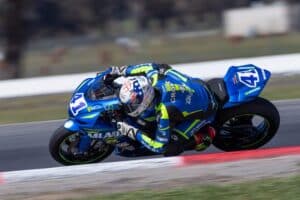 I've diligently categorized my motorcycle gear recommendations into all available categories, with the aim of providing you with a comprehensive analysis that showcases the absolute best options for all your needs. These items are the culmination of in-depth research, extensive testing, and personal use throughout my vast experience of 50+ years in the world of motorcycling. Besides being a passionate rider, I've held leadership positions and offered consultancy services to reputable companies in over 25 countries worldwide. To See Our Top Picks and the Best Prices & Places to Buy: Click Here! |

